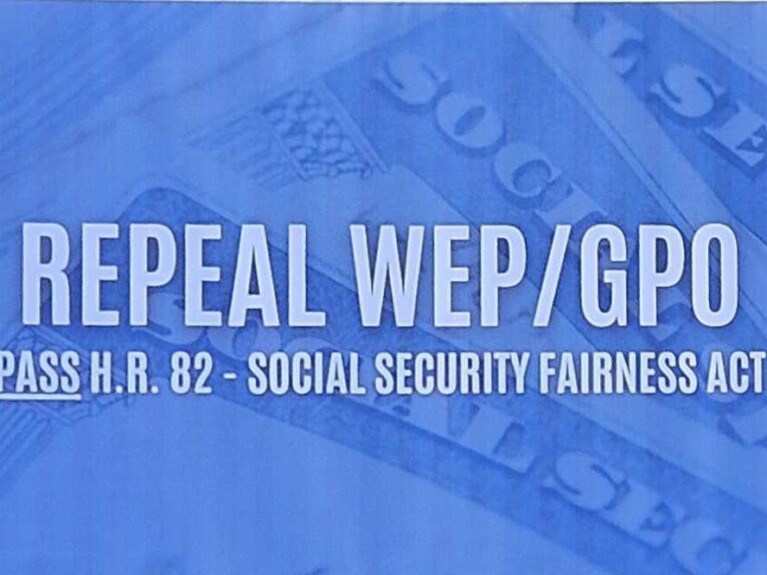Three Years Later and Still Wondering, “Where’s Phased Retirement?”
| FOR IMMEDIATE RELEASE | Contact: Jessica Klement |
| July 9, 2015 | 703-838-7760 |
| jklement@narfe.org |
Alexandria, VA – July marks the third anniversary of the passing of legislation authorizing phased retirement throughout the federal government. Unfortunately, this commonsense, money-saving initiative is still not available to most federal employees. The National Active and Retired Federal Employees Association (NARFE), along with Congressman Gerry Connolly, D-VA, the Professional Managers Association (PMA) and the Senior Executives Association (SEA), join today to express frustration over the slow rollout of phased retirement.
“After the law passed, and to this day, NARFE members continue to contact our offices, wondering when phased retirement will be available at their agency. Many said they were delaying retirement decisions until their agency provides more information on phased retirement options,” NARFE President Richard G. Thissen commented. “These are long-serving, dedicated public servants who felt they had knowledge to pass on to their successors, and were not yet ready to leave civil service full time. Unfortunately, most of them have since retired, as their agency has not yet implemented phased retirement, taking vast institutional knowledge with them. This is counter to the intent of the law.”
“Congress authorized federal agencies to utilize phased retirement in recognition that our nation’s 21st Century civil service requires greater flexibility and choice in retirement options,” said Congressman Gerry Connolly, Ranking Member of the Subcommittee with jurisdiction over the federal workforce. “Agencies often clamor for increased personnel flexibility from Congress, and phased retirement is intended to be precisely the type of innovative tool that enables managers to provide unique mentoring opportunities for the next generation of civil servants, while ensuring that agencies do not lose decades of institutional knowledge and experience in a massive federal retirement tsunami. Based on feedback from my constituents, there is a strong demand among experienced federal employees for alternative retirement options that allow individuals to effectively transition out of government service. As we mark the three-year anniversary of phased retirement’s enactment, it is as frustrating as it is unacceptable that aside from the Library of Congress, the Office of Personnel Management has received zero applications for phased retirement.”
“For the past three years, the Internal Revenue Service has considered implementing a phased retirement trial that would allow a select group to test this process before offering it to the broader eligible staff,” said Tom Burger, Executive Director of PMA. “Unfortunately, without full implementation of the phased retirement program, we are losing knowledgeable staff with years of experience in their specific job, who walk out the door, taking all that knowledge with them. With the budget crunch hindering the hiring process, we are gaining more vacancies faster than we can fill them. Phased retirement is one solution to ensure skills transfer from outgoing staff to the next generation of employees.”
“SEA has long supported phased retirement as a good succession planning tool for agencies to use as knowledgeable and experienced employees continue to elect to retire,” said Carol Bonosaro, President of SEA. “SEA was pleased to see Congress finally approve this authority in 2012, only to later be disappointed that final regulations issued by OPM in 2014 did not reflect the recommendations of SEA and other workforce stakeholders. Some of our members were anxiously awaiting phased retirement but grew disillusioned that their agencies will ever offer it and retired. If agencies have legitimate reasons they cannot implement phased retirement, they should simply inform employees of this fact and end the waiting game. Indeed, in the years since Congress acted, many talented senior executives and government employees have already left federal service, their institutional knowledge lost forever.”
“The new authority is supposed to provide managerial flexibility, crucial during this time of austerity budgeting. Instead of losing experienced employees, agencies will be able to retain them on a part-time basis and benefit from the law’s requirement to mentor junior employees, including their replacements. Continuity of government operations should improve as a result. However, none of this is possible if phased retirement isn’t implemented,” Thissen concluded.
Phased retirement is estimated to save the federal government $450 million over the next ten years. On May 28, NARFE sent a letter to the Chief Human Capital Officers (CHCO) Council asking its 25 members to report publicly their agency’s progress on implementing phased retirement. NARFE has not received a response.
To watch NARFE’s Legislative Director, Jessica Klement, discuss frustrations with the slow implementation of phased retirement with the Federal Times, please click here.
# # #
The National Active and Retired Federal Employees Association (NARFE), one of America’s oldest and largest associations, was founded in 1921 with the mission of protecting the earned rights and benefits of America’s active and retired federal workers. The largest federal employee/retiree organization, NARFE represents the interests of nearly five million current and future federal annuitants, spouses and survivors.


